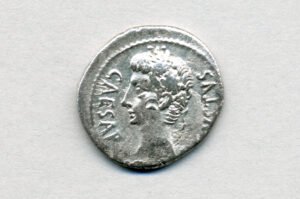Roman Provincial Coins – The Complete Collector’s Guide
The first time I picked up a Roman Provincial coin, I almost passed it by.
It didn’t look like the denarii and sestertii I was used to — the portrait style was different, the legends were in Greek, and the reverse featured a local temple I didn’t recognize. But that’s exactly why I bought it. Provincial coins are where Rome meets the provinces, and they tell stories the standard Imperial issues can’t.
What Are Roman Provincial Coins?
Roman Provincial coins were struck in cities across the empire, outside the main Imperial mints. They were used in local markets and often reflected regional culture, architecture, and religion. While Imperial coins carried messages from the emperor to everyone, provincial coins spoke in a local dialect — both in language and in imagery.
A Blend of Roman and Local
What I love about provincial coins is the mix. You might see the emperor’s portrait on one side, just like on Imperial issues, but the reverse could show:
-
A local god or goddess.
-
Famous city landmarks.
-
Mythological scenes tied to the region.
-
Symbols of local industries — grain ears, ships, amphorae.
The legends often switch from Latin to Greek, especially in the Eastern provinces, giving them an entirely different feel in hand.
Metals and Denominations
Provincial coins were usually bronze, though some cities struck silver tetradrachms and other local denominations. The weights and sizes varied from city to city, which makes identification a challenge — and a joy — for collectors.
Why Collect Roman Provincial Coins?
-
Local Flavor – Designs reflect the culture and pride of the issuing city.
-
Historical Insight – You can trace Rome’s reach into every corner of the empire.
-
Variety – The range of types, sizes, and designs is staggering.
-
Accessibility – Many are surprisingly affordable compared to rare Imperial coins.
Collector Tips from Experience
-
Learn the local myths — they explain a lot of the designs.
-
Greek inscriptions can be intimidating at first; a good reference guide is your best friend.
-
Don’t expect uniform sizes or weights — variety is part of the fun.
-
Look for coins in good bronze condition; patina can make the designs pop.
(Read our [Authentication Guide] – link placeholder)
Value Factors
-
City or Region Rarity – Some mints were prolific, others scarce.
-
Design Appeal – Striking reverses or well-executed portraits draw more attention.
-
Condition – Sharp detail on both sides makes a big difference.
-
Historical Context – Coins tied to famous cities or events carry extra weight.
Notable Examples
-
Alexandrian Tetradrachms – From Egypt, with portraits of emperors and local gods.
-
Antiochene Issues – Often featuring the city’s Tyche (fortune goddess) or architectural scenes.
-
Ephesus Bronzes – Showcasing the famous temple of Artemis.
-
Philippi Coins – Tying directly to the city’s role in Roman history.
Final Thoughts
Roman Provincial coins are like postcards from the empire’s far reaches — local art and history framed by Roman authority. They don’t just tell you what the emperor wanted you to believe; they tell you what the locals valued enough to put on their own money.
Hold one in your hand, and you’re not just touching Roman history — you’re touching a city’s pride, its beliefs, and its place in the world.


